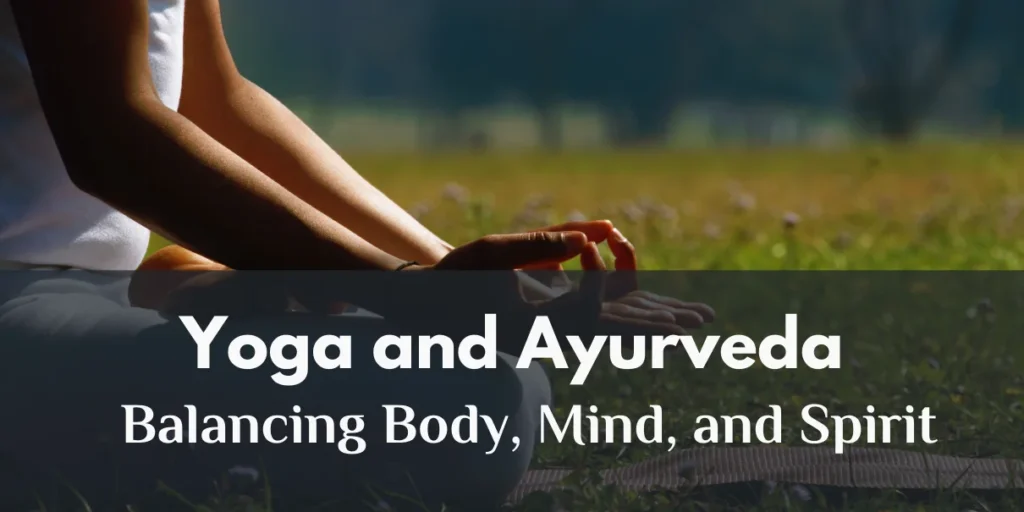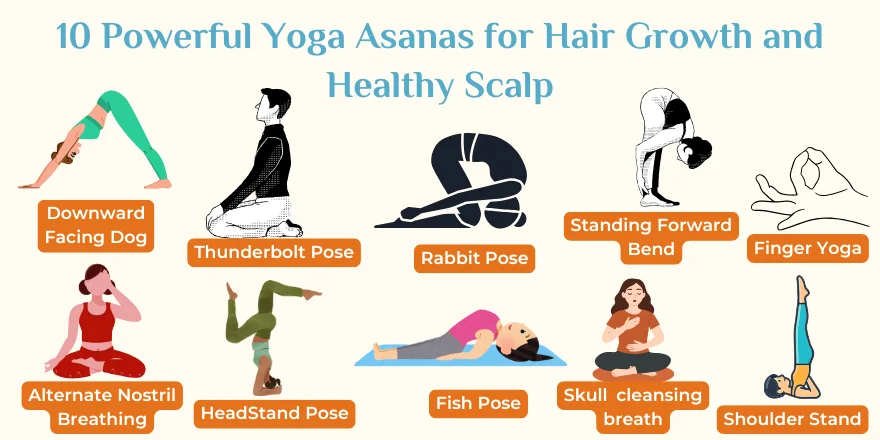Stress is becoming the new normal, our thoughts are overwhelmed and our bodies are operating on borrowed resources; even in this world where lines are blurred and everyday is a major test in and of itself, the time-honored practice of Yoga and Ayurveda is an old crane making a comeback. They are not merely practices; but styles of life and philosophies, ways of bringing into harmony the body, The mind and the spirit.
The majority of the population is aware of yoga, as a set of poses, and Ayurveda, as a herbal medication system. However, as a matter of fact these two are two inseparable brothers–two branches of one tree of knowledge that grew thousands of years ago in India. Yoga does not stand on its own without Ayurveda, and Ayurveda withoutYoga does not possess its necessary pragmatic feel. Together they help to bring about a complete method of living, a much needed method of living to-day perhaps more than ever.
Why Yoga & Ayurveda Belong Together
Consider Ayurveda as a science of living in coincidence with your unique constitution (your Prakriti) and consider Yoga as the act of uniting your inner-self with the universal-self. Ayurveda determines an imbalance and prescribes diet, life style and herbs to bring it back to health and Yoga provides you with the constituents-movement, breath, meditation, awareness and have them feel the unison in everyday life.
Both sciences share the same foundation:
Holding that body, mind and spirit are in correlation.
- Prevention of disease and not treatment.
- The realization that the balance is individual rather than a generic direction.
Actually, it is not only the continuation of the message related to Ayurvedic roots of antiquity, where the words resembling what is similar to the health concept are abundantly found in the works of Charaka Samhita and the Yoga Sutras of Patanjali: the essence of health is not the lack of infection, but the lack of imbalance and awareness.
Understanding the Doshas: Ayurveda’s Gift
Ayurveda leads us to believe that each person is born with a separate set of constitutions (the trio of doshas): Vata, Pitta, and Kapha.
- Vata (air + ether): Creative, quick, enthusiastic—but prone to anxiety, insomnia, and digestive issues when out of balance.
- Pitta (fire + water): shrewd, competitive, concentrated-yet-has the capacity to scald, get stubborn or inflamed.
- Kapha (earth + water): Stable, calm, compassionate-However, might have a problem of fastening, gaining of weight or attachment.
Yoga complements this beautifully. For example:
- Vata type personnel can benefit through grounding such as slow Hatha yoga, slow breathing, the meals with a warm nature.
- A Pitta can feel equilibrium in a cooling pranayama, meditation as well as gentler flows instead of hot power yoga.
- A Kapha can thrive on in-spurring activities such as vinyasa, dynamic pranayamas and light, spicy meals.
- That is why yoga classes based on Ayurvedic wisdom are more intimate. Rather than an ordinary workout, it is a process of inner-self discovery and harmony.
Yoga: The Practical Application of Ayurveda
Ayurveda knows what is unbalanced; Yoga can be used to know how to make it balanced.
Here is the scenario: An Ayurvedic check-up determines that you are Pitta type with an issue of excessive heat and stress. The Ayurvedic prescription may include cooling foods, not working too late and being outdoors. The methods of cooling down that infertile anxiousness? That is where Yoga comes in-marinating, cooling pranayama such as Sheetali and heart opening asanas to relieve tension.
Practicing Yoga and Ayurveda together prevent becoming a cyperspacePhilosophy. They are brought to life as breathing living rituals.
Science Meets Tradition: The Modern Relevance
Yoga and Ayurveda have been extensively discounted as something ancient and unlivien means by skeptics. But these days modern studies tell a different tale:
One study was conducted in the Journal of Ayurveda and Integrative Medicine in 2021 and it found that Ayurvedic-based lifestyle interventions dramatically increased the sleep, digestion, and the energy levels of the participants.
Neuroscientific studies show that daily yoga changes the brain structure to make one less stressed and more emotionally resilient.
A case has been reported by the Harvard Medical School stating that yoga decreases the signs of inflammation and this can be considered the same way that Ayurveda refers to balancing Pitta.
When considered in detail, Ayurveda offers the system of personalized medicine, whereas yoga offers the practices that union with the mind, which contemporary healthcare has only recently come to value.
Yoga & Ayurveda in Daily Life
These sister sciences are lovely because they are simple. No, you do not need to change your life in a radical way on one night, you may start with small working steps:
- Morning Rituals (Dinacharya): Ayurveda states that it is best to kick-start the morning with activities that improve oral hygiene such as tongue scraping, pulling oil, and taking warm water. This is followed by yoga asanas and pranayama to form an effective morning routine.
- Seasonal Awareness (Ritucharya): Ayurveda aligns with the cycles of nature. Restorative yoga and light foods cool your body in summer and warming foods and vitalizing flows in the winter.
- Mindful Eating: Ayurveda teaches one to eat based on his or her constitution and hunger rather than his or her emotions. This combined with yogic mindfulness alters meals into an act of meditation.
- Stress Management: Ayurveda might recommend such ingredients as Ashwagandha, Brahmi, but Yoga provides you with meditation and breath-work to relax your nervous system immediately.
- Holistic Healing: Be it frustration, stomach upset, or headache, integrating Ayurvedas dietary advice with the physically and psychologically rejuvenating effects of Yoga results in a natural and wholesome mode of treatment.
Live Yoga Classes Online: Bringing Tradition to the Modern World
Accessibility is the toughest obstacle to many. Not all people are able to commute to Ayurvedic facility or participate in a yoga studio. It’s where live yoga classes online find their place between being a routine and a convenient matter.
Online the teachers can now incorporate the Ayurvedic knowledge in yoga practices applied to the individual requirements. For example:
In the event that a student expresses experiencing anxiousness (Vata type of imbalance), the topic of the class can be dedicated to grounding postures and relaxing the breath.
In the case of a person who feels lethargic (Kapha imbalance), it is possible to focus on vigor of the sequences and dynamic flows of the session.
The result? Students do not just blindly march through one of the generic classes. They are instead given a whole person practice- that which handles their constitutional challenges and lifestyle difficulties.
This is the key at Shihayoga.com. It is not only to teach yoga postures but also to enable students to work as their own healers- by using Ayurvedic wisdom along with practical yoga practices.
Emotional Dimension: More Than Physical Health
And yet beyond the science and the framework, there is an unmistakably emotional aspect of the pairing of Yoga with Ayurveda.
- In the process of feeling lighter when your digestion is good because you had chosen foods that are benefiting your dosha, you not only feel lighter–you feel more alive.
- When your mind decansters with meditation, it is not only a relaxation method but a kind of reconnection with your inner peace.
- When you understand why your body is acting the way it is, the self judgement will become less and self acceptance will increase.
This is an emotion shift that is why many practitioners have a statement saying, Yoga Ayurveda did not only heal my body, it healed my relationship with myself.
Challenges and Misconceptions
Naturally, Yoga- and Ayurveda-integration into everyday life is not an easy task. Instant results are expected by many individuals but consistency and patience are core elements of science in these fields. Ayurveda is confused with genera (Ayurveda only) and Yoga with flexibility (Yoga only).
However, the deeper I read I found that Yoga & Ayurveda are never flash remedies, but a life long practice. Taken in earnest, they yield much more than exciting pills, or fitness fads.
Final Reflection: A Path of Integration
Balance is evasive in the digitally-driven, and fast-paced world of today. But the great old friendship between Yoga and Ayurveda teaches us that balance is not found outside, things to be chased after but it is a part of us that we can grow.
Moving the body, the mind and the spirit, we do not only control health, we feel healthy.
You can start with as simple breathing exercises, Ayurvedic nutrition designed for you, or participate in live yoga classes online with the integration of these activities, and all of them are aimed at returning to yourself and your state of nature.
Deep within, Yoga and Ayurveda help us remember just one important thing: we do not need a cure, but rather to learn to heal ourselves.








